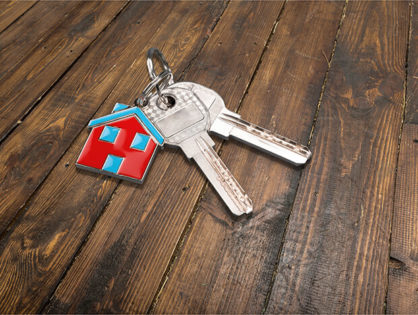LOS ANGELES, CA – When you consider the number of Baby Boomers who are only getting older and needing more accessible assisted living, with younger people working and tied down in finding opportunities to care for their elders. Opening an assisted-living business targets one of the fastest-growing global markets and is a great way to tap into a booming sector of business as well as secure a sound investment. Although it takes more than a big heart to start and run a successful assisted living facility, as it is an enormous amount of responsibility, and before you commit, be sure you know what you are going into. When you know this is what you want to do before you get involved, the Local Records Office offers some helpful guidance to turn your home into an assisted living facility in Los Angeles, California.
While there are currently 20% of senior citizens in the U.S. population by 2030, that is up from just 12.4% in 2000. And by 2050, the number of U.S. citizens aged 85 and older could quintuple to 21 million, the senior-aged group will explode
Assisted Living Business: A Booming Sector of Business and a Sound Investment
Before you begin your search or take any further steps, take your state’s administrator course. It will give you a general idea of where to begin. Continuing Education (CE) Requirements – State Board of Health rules require administrators to complete 6 hours of continuing education per year. The State Board of Examiners of Assisted Living Administrators requires 12 hours of continuing education for licensed administrators of assisted living facilities and 18 hours of continuing education for licensed administrators of specialty care assisted living facilities.
Get the experience and get involved first in the field by spending time in one, some recommend spending an entire year in a facility to familiarize yourself with their daily operations. Take notes of things you like and dislike in the management of the facility. And do not hesitate to ask the owner questions regarding the ups and downs of owning the facility. Most will be happy to share their own experiences.
Operating an assisted living facility requires a large amount of knowledge and it is recommended to learn as much as possible about this 24X7 job. This will also give you the chance to interact with patients.
Starting an Assisted Living Facility: Navigating State Regulations and Requirements
Operational manuals and examination data are both essential tools to review before creating a business plan. Create a business plan including budget needs for remodeling required for your location, lease requirements, insurance, equipment, and labor costs. Provide details of how large the facility will be and how many people it will serve. Include a marketing plan to explain your target market. As an example, you may target high net-worth clientele that does not need much assistance but want a secure, safe environment to live in. This plan will also be used to seek funding from federal and state funding sources, such as grants.
Also, prepare to have cash on hand to convert the home after you buy it, as it can get expensive
Residents Allowed Per Room – A maximum of two residents is allowed per resident unit.
The Bathroom Requirements – shared resident rooms may have common toilets, lavatories, and bathing facilities. When shared, minimum requirements include (at least one of the following): one bathtub or shower for eight residents; one lavatory for six residents; and one toilet for six residents.
Physical Plant Requirements – Private resident units require a minimum of 80 square feet, and double occupancy resident units require a minimum of 130 square feet. Look to YOUR STATE for guidelines.
Familiarize yourself with state regulations and prepare to differentiate your facility from others by creating a thriving business in a community where family members feel confident leaving their family members.
Register the business with the state, obtain a proper federal tax identification number, and acquire any additional permits or state tax identification required. The Residential Care Facilities for the Elderly or Assisted Living Facilities must meet care and safety standards set by the State and must be licensed and expected by the Dept. of Social Services, Community Care Licensing (CCL).
General Liability insurance cover trips and falls that can happen at the facility itself. You are also required to have liability insurance in the amount of at least $1,000,000 per occurrence and $3,000,000 to annually cover injuries to residents or guests caused by the negligence of the facility owner and/ or employees.
Business property insurance includes the actual building, and the items the business owns, including furniture, computers, medication charts, walkers, and any other required equipment.
Workers’ compensation insurance covers when employees get hurt on the job. And it is required by the state for any business that has acquired employees.
Senior Provider licenses in Los Angeles, CA
Professional liability insurance is important because covers when someone is injured or dies in your care and there is a lawsuit for not doing your job properly. Professional liability covers the lawsuits against you or your staff for not doing the job properly.
Licensing through each state differs in requirements; contact your local Department of social services and determine the regulatory environment in your state. Typically it will include safety operations, infectious diseases control, licensing, staff training, audits, inspections, and disclosure and privacy protection.
Also, contact your state’s governing body that licenses assisted living and the Department of Health. You also may want to contact the Assisted Living Federation of America or the American Association of Homes and Service for the Aging which is both national associations for providers of assisted living care.
Contact your local Small Business Association office for any help, analyze the demographics of the area, and make sure there is a need in your community or choice and those that need it can afford what you plan on charging. Pick a great location that is residential in feel, and yet close to local healthcare facilities, easy for doctors and professionals to visit. Spend a great deal of time finding employees that are trained to care for and communicate with seniors. Do not underestimate the need to market your facility. Factor in the costs of hiring a professional to do the marketing.
Opening an Assisted Living Facility: Essential Tools and Strategies for Success
Also, contact your state licensing agency and obtain copies of regulations if you desire more detailed information. Here is some following information on what you can expect, listed by Carol Marak, a dedicated senior writer on the assistedfacilities.org website.
Life safety – As each state has one or two types of licensed assisted living facilities for the elderly: a standard assisted living facility and a specialty care assisted living facility for residents with dementia or Alzheimer’s symptoms. Check in your state to get a full description and list of categories.
The Alzheimer’s unit requirements in facilities not licensed as specialty care facilities may neither admit nor retain residents with severe cognitive impairments and also may not advertise themselves as a “Dementia Care Facility,” nor an “Alzheimer’s Care Facility,” nor label themselves as specializing in or being competent to care for individuals with dementia or Alzheimer’s disease.
Staff training for Alzheimer’s care -The staff in assisted living facilities and specialty care dementia units must receive specific training on topics before having any resident contact and must have a minimum of 6 hours of continuing education annually. While each state is different; please check based on your state’s requirements.
Staffing requirements – required staffing includes an administrator 24/7 and personal care staff as needed to provide adequate care and promote an orderly operation of the facility.
A specialty care assisted living must have an administrator 24/7, a medical director, one RN, and a unit coordinator. Specialty care assisted living must have at least two staff members on duty 24 hours a day, seven days a week, and must meet staffing ratios specified in the regulation. Check with your state for any specific requirements.
Administrator education and or training – administrators have a license from the State Board of Examiners of Assisted Living Administrators. Check-in your state for other requirements.
Staff education and or training – in an assisted living facility, staff having contact with residents including the administrator must have the required initial training and refresher training as needed. In a specialty care assisted living facility, each staff member must have initial training in the basics and complete Dementia Education and Training. Check-in your state for other requirements.





